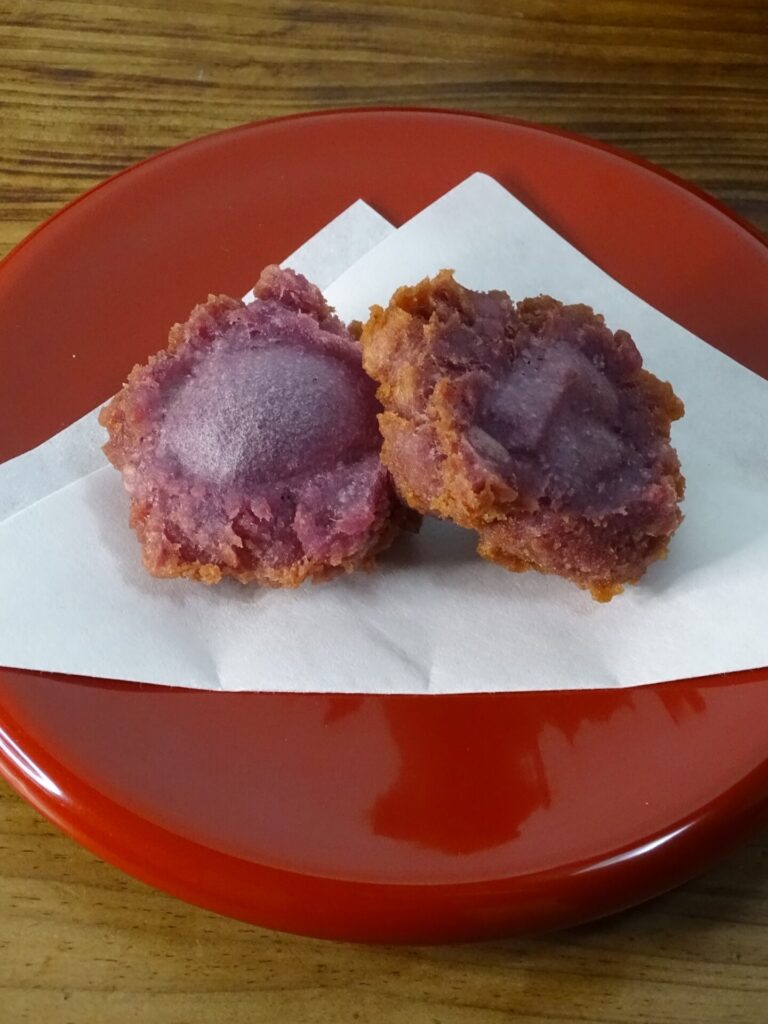Nmu

Potato. In Okinawa, sweet potatoes are just called potatoes, nmu. Sweet potatoes’ trajectory started from the Ryukyu Kingdom via the Satsuma Domain to reach all of Japan.
Prior to the war, Okinawa lived on this nmu, save for financially animated towns like Naha. Most households cooked three meals worth nmu in a large pot every morning. For supper, a dish and miso soup accompanied this nmu.
Nmu was consumed as the staple diet until the 30s in the Showa era (1955~1965). We cannot precisely determine when nmu was replaced by rice. Anyhow, today’s staple diet is rice, and to replace it back with nmu would cost a lot more—this is indeed a dramatic change. The history of human lifestyle seems so peculiar when such dramatic change can happen outside of our consciousness.

Photo: TARUMI Kengo
Speaking of dramatic changes, the spread of potatoes from China must have been a powerful one as well. In 1594, potatoes were introduced to China via Luzon Island. Only eleven years later, in 1605, it was brought in by Noguni Sokan to Okinawa via Fujian province, then cultivated by Gima Sinjo. Potatoes grow on poor soil and stand the heat and the typhoon: it was a perfect crop in the Okinawan climate and nature. It started as a valuable famine relief crop until it held its place as a staple diet.
The mainstream of Okinawan nmu today is purple yum, a yum with a vividly purple-colored inside. Yellow ones used to be common, though purple has become more popular today. Purple yum has a decently toned-down sweetness and a soft and crumbly taste. Would it be a favor to say that I find it better than the yellow mainland potatoes? It remains a mystery to me why such tasty purple yum had never spread to mainland Japan.








































































































































































































































